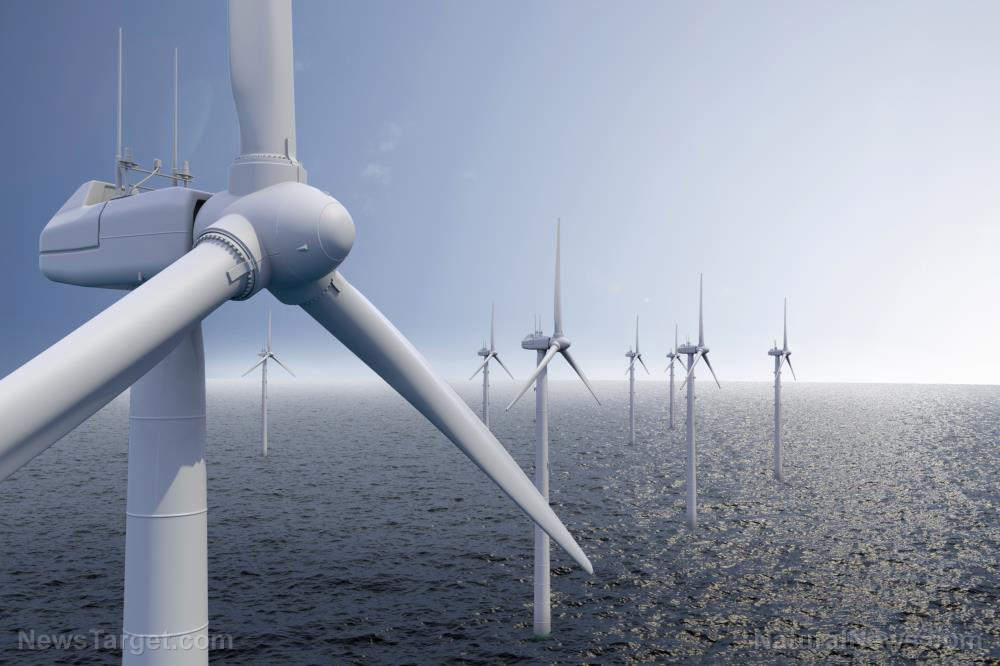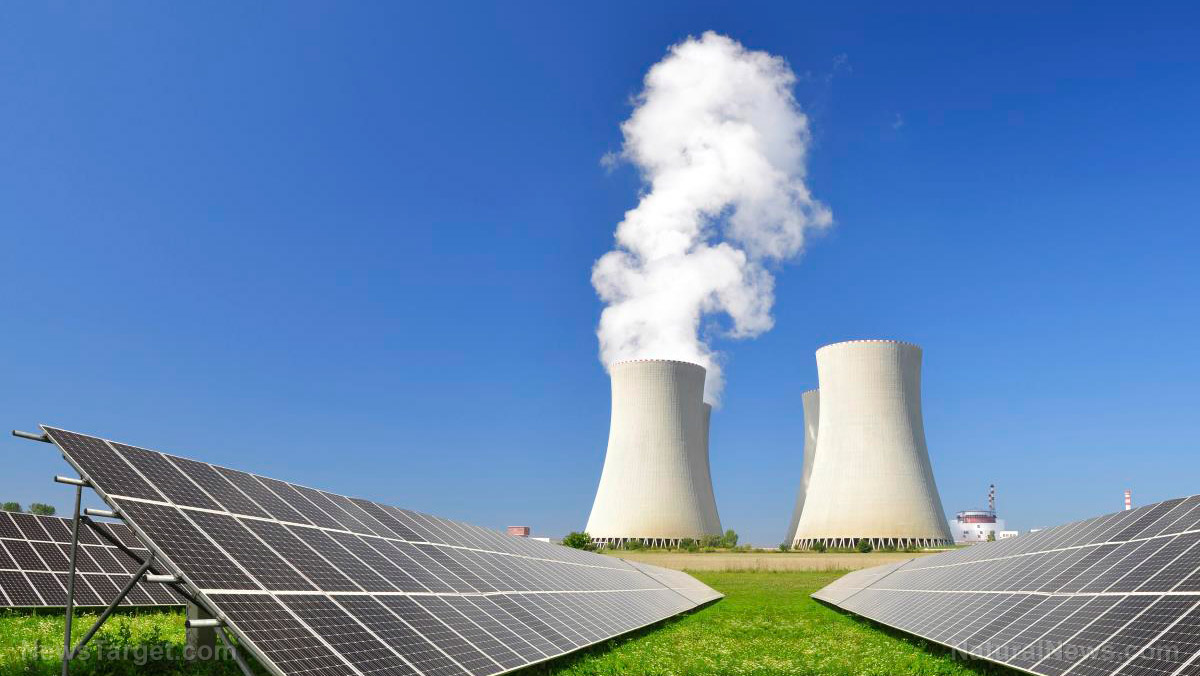China’s giant floating wind turbine breaks records, pioneering new era in renewable energy
08/18/2025 / By Willow Tohi

- China’s new 17-megawatt floating wind turbine breaks records, capable of powering 6,300 U.S. homes annually.
- Installation in deep waters off Yangjiang, China, tests stability in waves exceeding 78 feet and typhoon-force winds.
- Floating turbines could unlock 80% of global offshore wind potential in waters too deep for traditional fixed-bottom foundations.
- The project underscores China’s leadership in renewable energy innovation amid global climate targets.
- Japan, among others, eye floating turbines to meet 2040 renewable goals, tackling limited shallow coastal resources.
China has unveiled a monumental leap in renewable energy innovation: a 17-megawatt (MW) floating wind turbine. It is the most powerful of its kind, capable of withstanding 78-foot waves and 73-mph typhoon-force winds. Developed by state-owned giants China Huaneng Group and Dongfang Electric Corporation, the turbine will undergo offshore testing near Yangjiang City later this year. This breakthrough marks a critical step toward harnessing the vast, untapped potential of deep-water offshore wind—a game-changer for countries racing to meet climate goals. The project positions China as a global leader in this emergent technology and could redefine energy production for depths previously deemed inaccessible.
A new era for offshore wind: Floating foundations vs. fixed limits
Traditional offshore wind farms, anchored to seabeds in shallow waters like the North Sea, remain constrained by depth. Fixed-bottom turbines dominate today’s market, with the UK’s Dogger Bank Wind Farm featuring 13-MW models. However, a staggering 80% of the world’s offshore wind potential lies in waters deeper than 195 feet, inaccessible without floating systems.
China’s floating turbine concept circumvents these limits. Its floating platform enables deployment in waters up to 985 feet deep, far beyond the current record of 192 feet set by Scotland’s Seagreen Wind Farm. This opens vast regions—from Japan’s deep coastal shelves to the U.S. West Coast—to renewable energy development, while reducing reliance on unpredictable onshore wind.
Technical breakthroughs in the deep blue
The turbine’s 489-foot tower and 860-foot rotor diameter dwarf existing models. Each rotation sweeps nearly eight soccer fields’ worth of wind, generating 68 million kWh annually—a 30% increase over the world’s largest fixed-bottom turbine.
Engineers prioritized durability: the turbine can survive sustained gales over 70 mph and 24-meter waves. “This isn’t just a technological milestone; it’s a practical solution for extreme marine conditions,” said a China Huaneng spokesperson.
Cost savings emerge as fewer, more powerful turbines slash installation and maintenance expenses. However, floating foundations remain costly; industry experts estimate they add $21 million to $74 million per MW compared to fixed-bottom systems. Economies of scale and innovation could narrow this gap in coming decades.
A breakthrough for energy independence?
Floating turbines address a pressing paradox: fossil fuels dwindle, but over half the planet’s offshore wind potential lies in deep waters unavailable until now. Japan, for instance, aims for 30–45 GW of wind energy by 2040 to phase out nuclear dependence—a target unachievable without floating tech in its deep territorial seas.
The Biden administration also considered U.S. Pacific regions, where federal lease auctions for offshore wind projects surged from $4.3 million in 2021 to $1.6 billion in 2023. Floating turbines could unlock renewable power for coastal states like California and Oregon, bypassing coastal constituency opposition common to near-shore developments.
From onshore roots to offshore frontiers
Onshore wind, a stalwart of renewables since the 1880s, faces land-use conflicts and intermittency issues. The 1991 Delabole Wind Farm in the U.K. heralded its commercial era, but competition for land space undercuts scalability. Offshore wind, pioneered in the 1990s, offers steadier winds at sea but suffers from high costs.
China’s floating innovation continues this evolution. If successful, it could undercut offshore costs by reducing turbine numbers per farm and offering proximity to coastal populations. However, challenges remain: seabed corrosion, wildlife impacts and grid integration—particularly in remote regions.
Toward an impermanent renewable future
China’s deep-water experiment underscores a bold vision for energy independence, marrying innovation to the urgency of climate change. As the turbine undergoes trials later this year, its success could catalyze a global revolution in offshore wind—a sector now poised to transition from shallow beginnings to uncharted depths. The stakes are high: with renewable energy demands escalating, floating turbines may be the indispensable link between ambition and achievement.
Sources for this article include:
Submit a correction >>
Tagged Under:
breakthrough, China, climate, energy report, energy supply, floating wind turbine, green tyranny, renewables, seabed corrosion, technology, wildlife, wind energy
This article may contain statements that reflect the opinion of the author
RECENT NEWS & ARTICLES
COPYRIGHT © 2017 FUTURETECH.NEWS
All content posted on this site is protected under Free Speech. FutureTech.news is not responsible for content written by contributing authors. The information on this site is provided for educational and entertainment purposes only. It is not intended as a substitute for professional advice of any kind. FutureTech.news assumes no responsibility for the use or misuse of this material. All trademarks, registered trademarks and service marks mentioned on this site are the property of their respective owners.




















